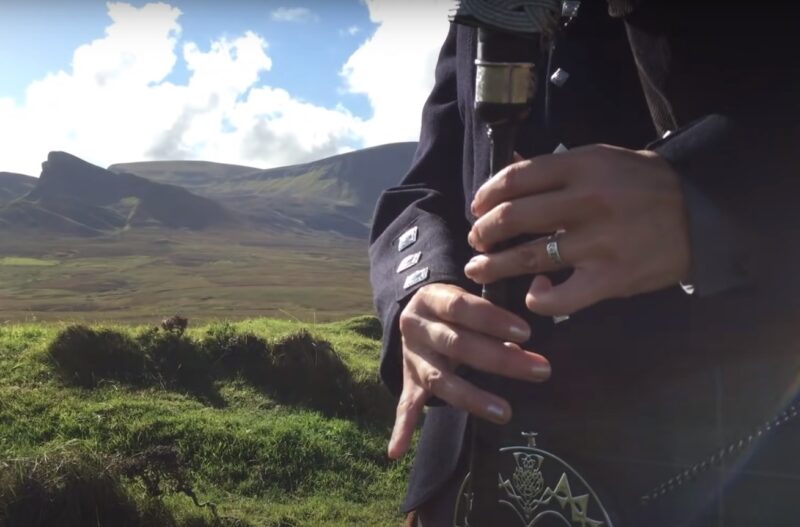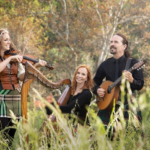Bagpipes stand out with their distinct sound and are a significant part of Scottish and Irish cultures. This traditional wind instrument creates sound through reeds, which are fed by a constant air supply from a bag. The player, or piper, maintains this air supply by squeezing the bag with one arm while blowing air into it.
Anatomy of Bagpipes

The bagpipes consist of several key components. The bag is the air reservoir, traditionally made from animal hide, though modern synthetic options are also used. The chanter is the melody pipe, equipped with finger holes that the player covers or uncovers to produce different notes.
There are typically three drones, one bass and two tenors, which provide a harmonic background. The blowpipe is the part used to inflate the bag, and the reeds, located in both the chanter and the drones, vibrate to produce sound.
Basic Playing Technique
Playing bagpipes involves a few fundamental steps. First, the player inflates the bag using the blowpipe until it feels moderately firm.
Maintaining a constant air pressure in the bag is crucial, achieved by squeezing the bag with the arm and intermittently blowing into it.
Producing different notes requires covering and uncovering the holes on the chanter. Additionally, managing the drones to ensure they remain in tune and provide a harmonious background is essential.
Common Challenges for Beginners

New players often struggle with several aspects. Managing air pressure in the bag can be challenging initially. Learning the correct finger placements and transitions for various notes on the chanter requires practice. Also, keeping the drones in tune while playing is a skill that develops with time.
Practice Tips
Improving bagpipe skills involves several strategies. Beginners may start by practicing fingering and tune memorization on the chanter alone, without using the bag.
Consistent, short practice sessions are generally more beneficial than long, infrequent ones. Recording practice sessions and listening back can help identify areas for improvement. Joining a community or finding a teacher for guidance and feedback can also be very helpful. Above all, mastering the bagpipes requires patience and persistence.
Advanced Techniques
After mastering the basics, players can explore more advanced techniques. Grace notes are quick, decorative notes that embellish the main melody.
Piobaireachd is a classical form of bagpipe music, known for its complexity. Learning to play different types of tunes like marches, reels, and jigs requires specific rhythmic and fingering skills.
Embracing the Cultural Aspect
The bagpipes are deeply rooted in cultural traditions. Engaging with the history and the cultural significance of the instrument can greatly enhance your playing experience.
Attending bagpipe music festivals, participating in workshops, and learning about the historical context of different tunes will give you a deeper appreciation for the instrument.
Expanding Your Repertoire
As you grow more confident in your skills, try to expand your repertoire. Bagpipe music varies widely, from traditional folk tunes to contemporary compositions. Learning a diverse range of music not only improves your technical skills but also keeps your practice sessions interesting and challenging.
Performance Skills

Playing an instrument is one thing, but performing with it is another. As you become more proficient, consider playing in front of an audience.
This could be at local community events, joining a bagpipe band, or even competing in bagpipe competitions. Performing helps in building confidence and adds an exciting dimension to your playing.
Continuous Learning
Even experienced pipers continue to learn and evolve. Seeking advanced instruction, attending master classes, and continuously challenging yourself with more complex compositions are ways to keep improving.
Remember, the learning process is ongoing, and even the most skilled pipers find new ways to grow and enhance their artistry.
Connecting with Other Pipers
Joining a community of pipers can be immensely rewarding. Whether it’s a local club, an online forum, or a national association, connecting with other pipers provides opportunities for learning, sharing experiences, and even making lifelong friendships. The bagpipe community is known for its camaraderie and support, making it a valuable resource for any piper.
FAQs
Can I learn to play bagpipes at any age?
Absolutely! Learning to play the bagpipes has no age limit. While starting young can be advantageous, especially in terms of lung capacity and physical endurance, adults can also learn effectively. The key factors are commitment, regular practice, and a willingness to learn.
How long does it typically take to become proficient at the bagpipes?
The time it takes to become proficient can vary widely depending on individual practice habits, musical background, and the frequency of lessons. Generally, it can take anywhere from a few months to a couple of years to reach a basic level of proficiency. Mastery, however, is a lifelong journey.
Are there different types of bagpipes, and if so, which is best for beginners?
Yes, there are several types of bagpipes, including the Great Highland Bagpipe (common in Scotland), the Uilleann Pipes (Irish), and others like the Northumbrian and the Italian Zampogna. For beginners, the Great Highland Bagpipe is often recommended due to its widespread availability and the abundance of learning resources.
What is the best way to maintain a bagpipe?
Proper maintenance is crucial for bagpipes. This includes regular cleaning, ensuring the bag is airtight, checking the reeds, and tuning the drones. For animal hide bags, seasoning is necessary to keep them airtight. Synthetic bags require less maintenance but should still be checked regularly.
Is it necessary to read music to play bagpipes?
While being able to read music is beneficial, it is not strictly necessary. Many pipers learn through the oral tradition, using a method known as ‘canntaireachd’, a vocal representation of bagpipe music. However, learning to read music can open up a broader range of learning materials and resources.
How do I choose the right bagpipes for me?
Choosing the right bagpipes depends on several factors like your budget, the type of music you want to play, and your physical size. It’s often recommended to start with a practice chanter and seek advice from experienced pipers or teachers. They can guide you towards a set of bagpipes that will be suitable for your needs and goals.
Final Thoughts
Playing the bagpipes is more than just mastering an instrument. It’s about embracing a rich cultural heritage, continuously improving your skills, and connecting with a community of like-minded individuals.
Whether you’re playing for personal enjoyment or performing for an audience, the journey of learning the bagpipes is a rewarding and enriching experience. Remember, every piper’s journey is unique, and the key to success lies in consistent practice, patience, and a passion for the music and the instrument.






